Mathematica: A World of Numbers... and Beyond
by IBM and the Eames Office
Since it is rather clumsy to go to the point on what is that, I selected and organized information about it. If you live in an area close to the Unicamp, at Campinas, SP, Brasil, you can see the poster at the IMECC

At ground level, under the clock display on the right lower portion of the above picture.
Mathematica, the first show organized by the Eames Office, is on permanent display at Boston’s Museum of Science and the New York Hall of Science. More than 50 years after its original inauguration, visitors still relish its beauty and multilayered exploration of how mathematics shapes our world.
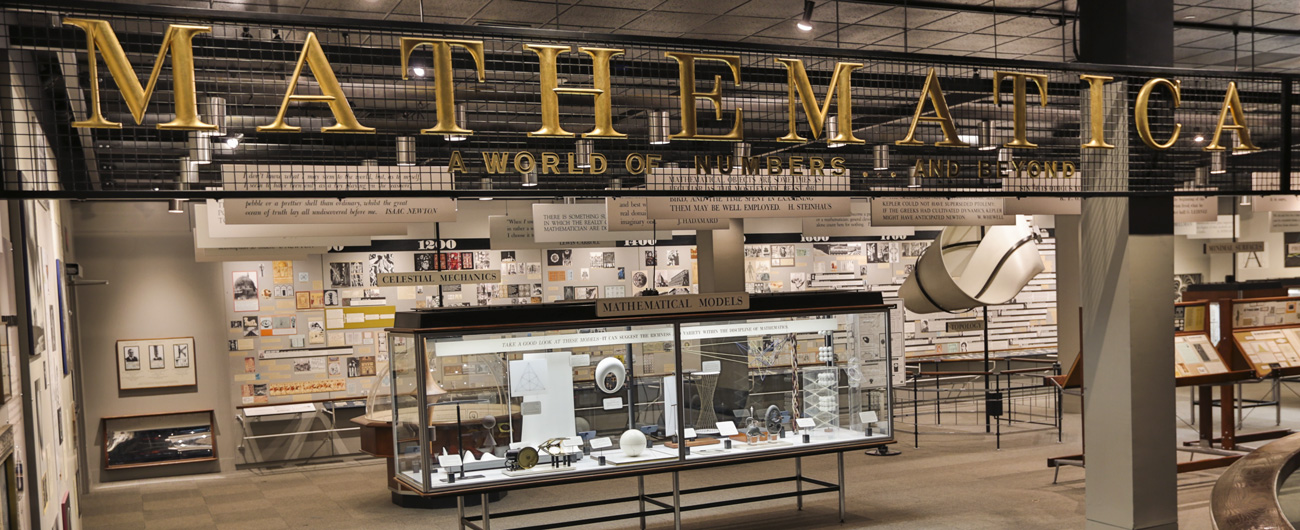 Boston
Boston
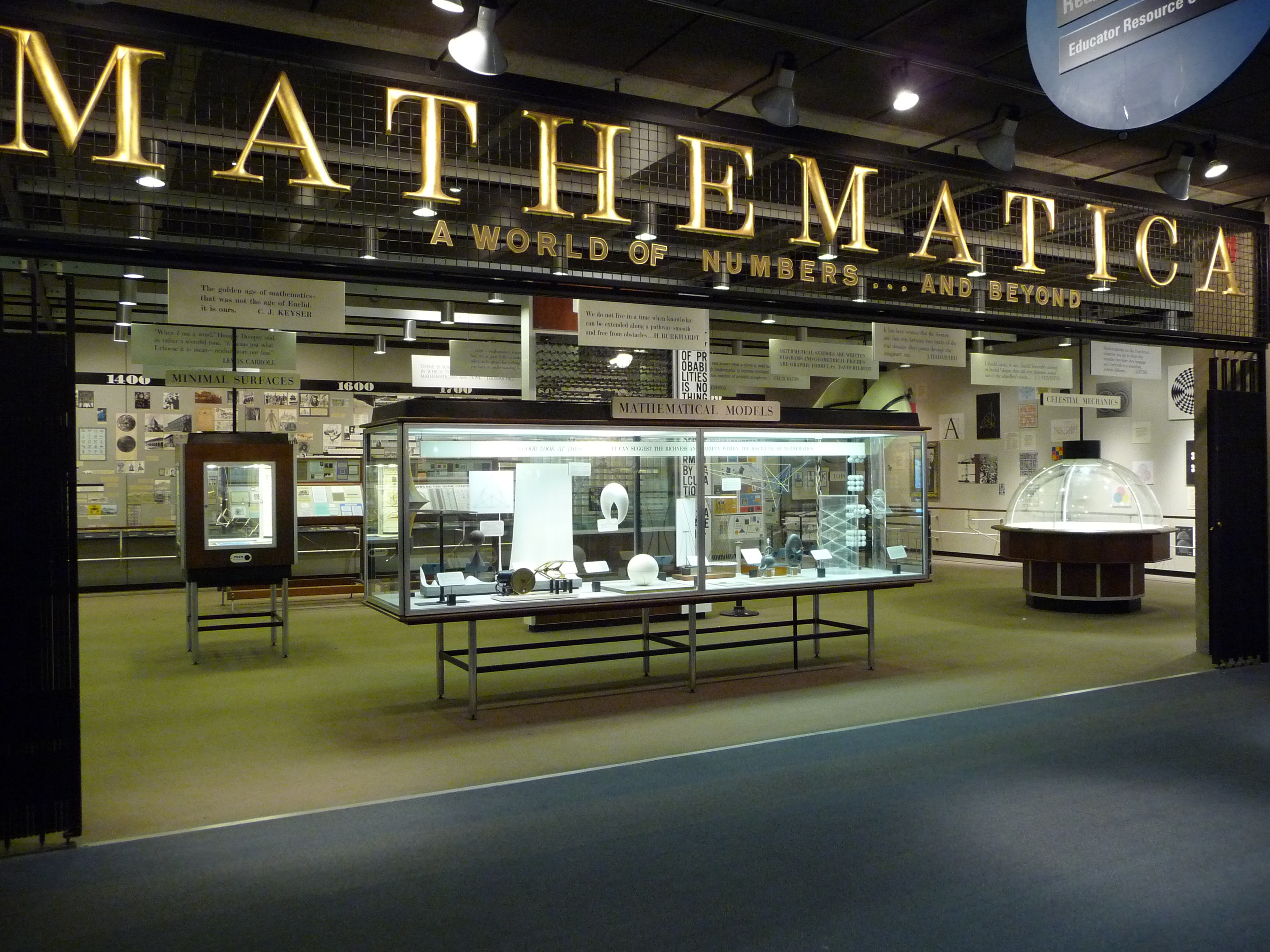 New
York
New
York
Probaly the best bet is to download the free App Minds of Modern Mathematics at iTunes. The basics can be seen at .It is worth though to know how it got there.
In 1961, IBM and the iconic designers Charles and Ray Eames presented “Mathematica: A World of Numbers… and Beyond” to the new California Museum of Science and Industry. It was the first of many exhibitions the Eames would create for IBM, and Mathematica would become so well-known that IBM would eventually create additional copies that were starring attractions at several U.S. science centers over the next five decades.
Five years after the opening of the Mathematica exhibit, IBM and Eames created “Men of Modern Mathematics” an enormous timeline of mathematical and scientific history. Copies of this timeline were added to Mathematica and posters were perennial favorites of museum shops and math department offices for years.
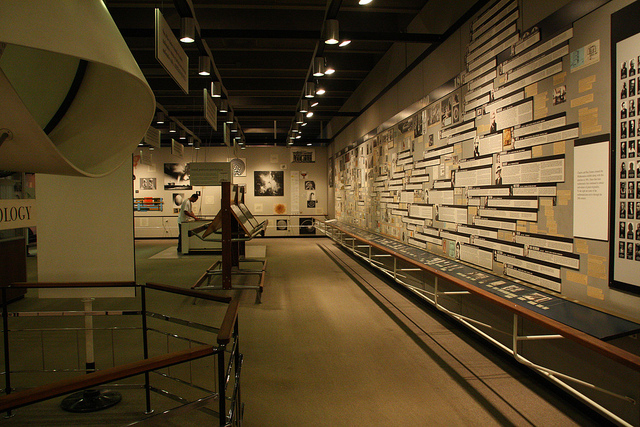
The Mathematica exhibit at the Museum of Science, Boston from Flickr user davepatten
To celebrate Ray Eames’ centenary, Eames Office and IBM again joined forces to take the content in the timeline and make an app out of it. The result is “Minds of Modern Mathematics” which is billed as a multi medium exploration of the history of mathematics
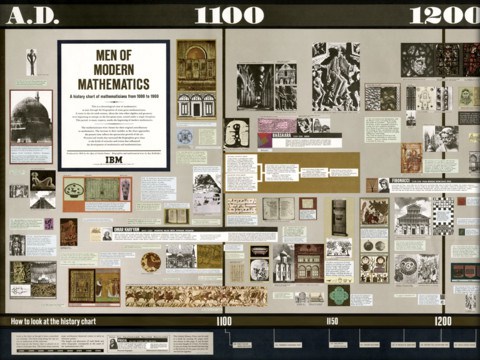
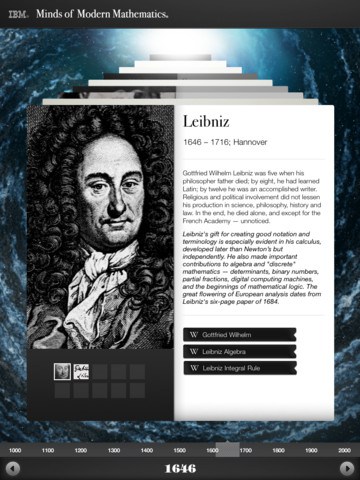
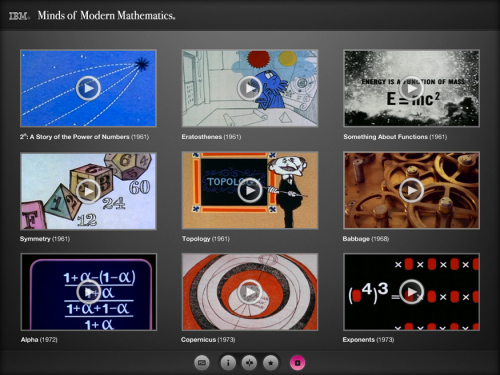
The Eames, perhaps best known to designers for their chairs and to dorks for “The Powers of Ten” film they made, were instrumental in creating the mid 20th century American aesthetic, partly for their willingness to engage in any medium they fancied; architecture, interior design, furniture, filmmaking, museum exhibitions, etc…
The surviving Mathematica exhibitions are practically artifacts themselves, living embodiments of the Eames’ design mind. They were also masters of content development, as this app makes clear. If you’ve ever stood in front of one of the “Men of Modern Mathematics” timelines, you can appreciate why its so hard to make a good timeline. They take a (literally) gigantic amount of historical content and somehow make it all tell the story they want. It’s a hypertextual experience in physical form. Your eye can skip and jump from node to node, backwards, forwards, up, and down, as you explore math and its connections to everything going on between 1000-1950.
The app manages to capture the feeling of that experience, while rendering it in a format suitable for the iPad, which takes advantage of the affordances of the iPad in a way think Ray and Charles would’ve enjoyed. Each person or event on the timeline has both text and images and links to more information on the web. The app changes the user interface depending on whether you’re in landscape or portrait orientation, a la Biblion. And best of all, it collects in one place the short films the Eames made for the exhibition on one screen. The Math Peep Shows are classics of educational medium. Concepts like scaling and size, exponents, and other mathematical esoterica are explained and explored in a decidedly whimsical fashion.
This exibition was extremely inspirational on doing this job about James Joyce specially the THE GUEST/HOST RELATIONSHIP